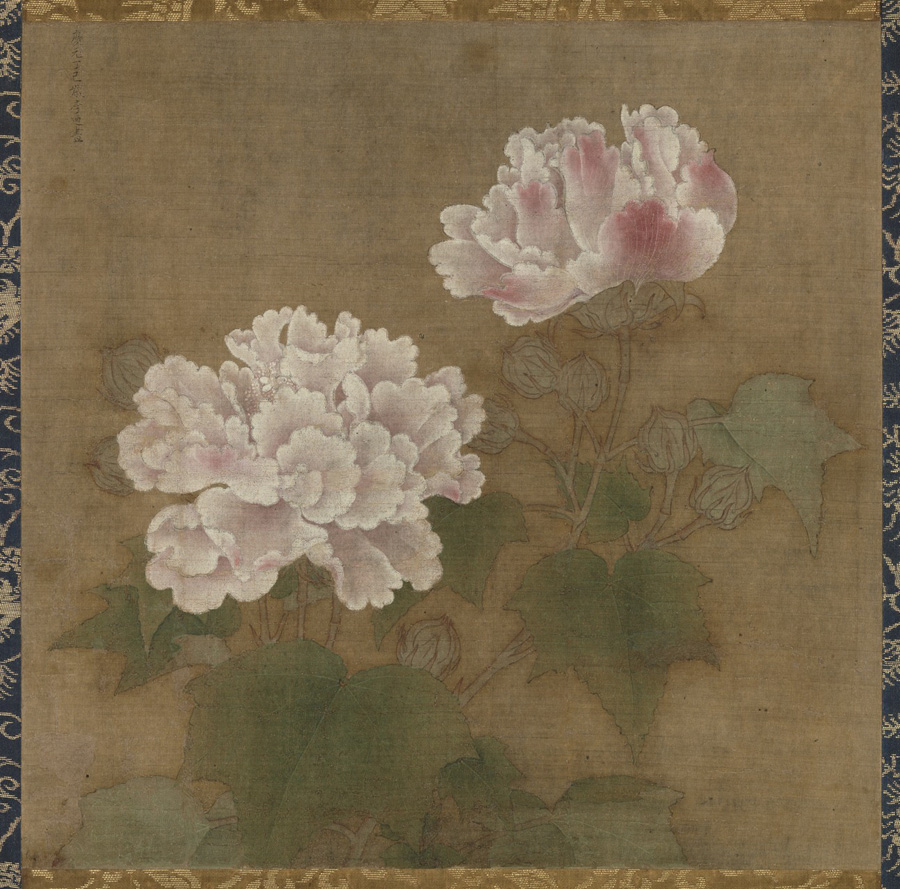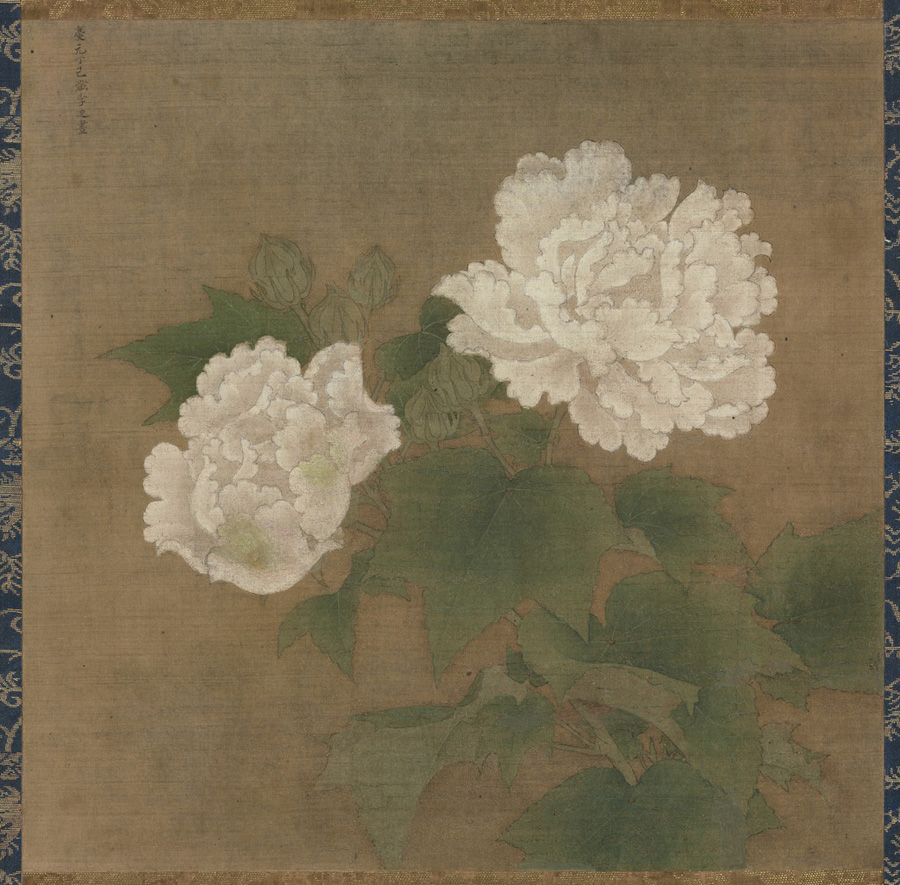Home >> Arts >> Painting >> Famous Chinese Paintings >> Li Di: Red and White Cotton Roses
Red and White Cotton Roses (紅白芙蓉圖)
Li Di (李迪, active c.1163-1197), Song Dynasty (960-1279)
Album leaves mounted as hanging scrolls, ink and color on silk, 25.2 x 25.5 cm, Tokyo National Museum
Li Di was a court painter in the Imperial Painting Academy of the Chinese Southern Song dynasty (1127-1279). Evidence that Li Di was active as a painter during the latter half of the twelfth century is provided by the dates he wrote on some of his works and also from the career of his son, Li Demao (李德茂), who, not surprisingly, also became a painter in the Imperial Painting Academy. Li Di specialized in painting flowers, birds, and animals, and these paintings of cotton roses are the masterpieces among his extant works. From the inscriptions on the paintings we learn that they were executed in what corresponds to the third year of the Qingyuan (慶元) reign in 1197.
These cotton roses are thought to be "drunk cotton roses" that first bloom white and then gradually turn crimson. Although the flowers are painted realistically, the delicate lines and the subtle gradation of color endow them with a sense of poetry. The surrounding blank space also conveys feelings of naturalness and calm.
These two hanging scrolls were thought originally to have been independent album leaves that were remounted as a pair of scroll paintings following the growth in appreciation of Chinese paintings born of Japanese tea-ceremony aesthetics.

